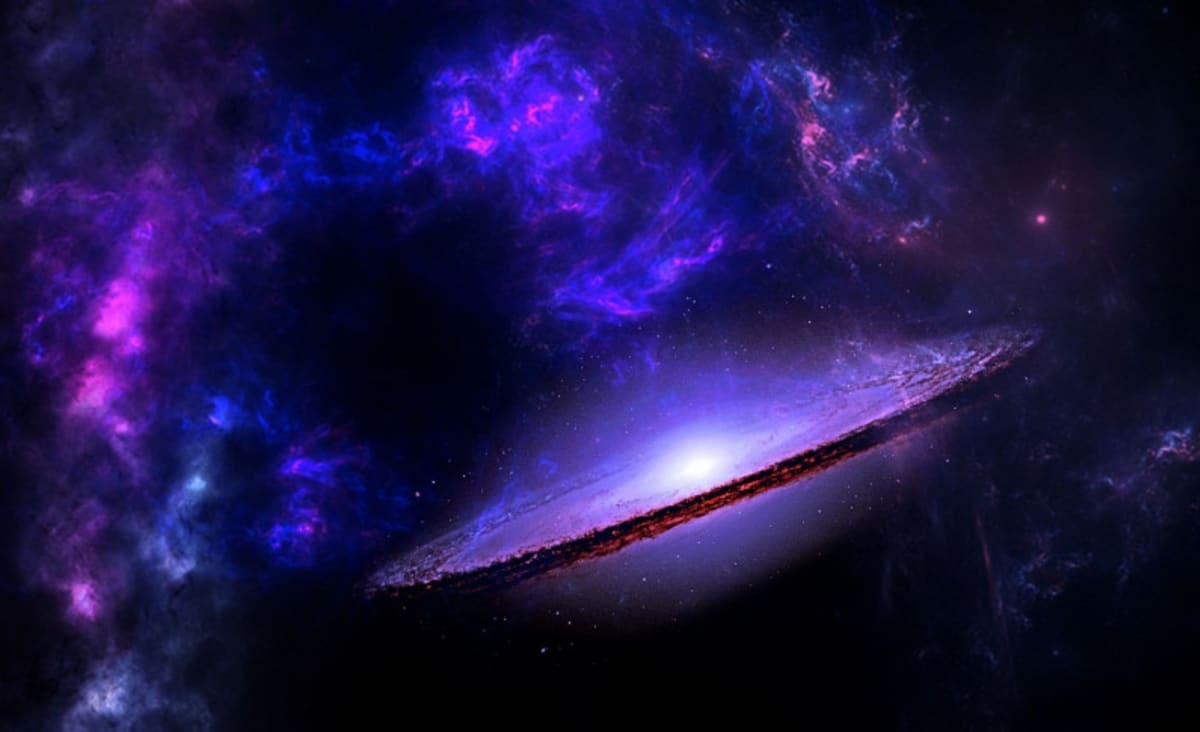
interestingengineering.com
Interstellar Spaceships Might Need to Prepare for Dark Matter
The force of dark matter is strong beyond our solar system! When we explore deep space in the Milky Way, we might want to prepare.
Science & Tech
The Milky Way is massive, but far more weighty is the volume of dark matter purported to pervade our home galaxy. And a pair of scientists have proposed that the cumulative force of dark matter in our galaxy is significant enough to affect interstellar spacecraft, according to a recent study shared on a preprint server.
While the study still requires peer review, it also says the Pioneer and New Horizons spacecraft were already affected, and so will planetary astronomy and astrophysics.
This could alter not only how we travel through deep space, but also how we study it.
Dark matter gravity on interstellar spacecraft
When an asteroid, comet, or even a spacecraft moves around the sun, our host star's gravity is the primary force in its motion. Out beyond Pluto, it's the entire solar system that serves as the main gravitational force. Even out in the Kuiper belt — the cloud of ancient primordial asteroids on the fringe of our solar system, any net-zero calculation of gravitational forces on a spacecraft is best calculated as a two-body problem: between the mass of the spacecraft, and that of the entire solar system. But all of that changes when you move too far away from the sun.
If "an object is moving sufficiently far from the sun, then there is another gravitational force that can play an important role," wrote the authors of the study. The lead study author is Professor of Celestial Mechanics and Mathematics Edward A. Belbruno of Yeshiva University, who is also visiting research collaborator at Princeton University's department of astrophysical sciences. He worked in collaboration with NASA Chief Scientist Jim Green, co-lead author of the study who is due to retire early this year, according to a blog post from the agency. But together, Green and Belbruno analyzed a different force that comes into play for spacecraft that travel in interstellar space.
As you might guess, they found that this is the cumulative gravitational force of the Milky Way galaxy. But, surprisingly, the overwhelming majority of this force isn't generated by the disc, central bulge, and the stellar halo of our galaxy. While those are there, the primary force of gravitational attraction stems from dark matter. And, although "it is small," the collective force of all dark matter in our galaxy "can cumulatively add up and significantly affect the trajectory of motion over long periods of time."
An Interstellar Probe to analyze dark matter beyond the solar system
Ordinary, or "baryonic" matter comprises roughly 5% of the total energy of the observable universe, according to the study. Dark matter (non-baryonic matter), which we can't observe directly, comprises 25%. That's five times the energy — roughly the same difference in strength between the average human and a grizzly bear. Yikes! "The dark matter halo contains most of the mass of the Galaxy," wrote the study authors. "In the milky Way the dark matter is measured by observing the rotational circular motion of the Galaxy" around the galactic center, and measuring its velocity relative to radial distance has in the past revealed that the rotational speed of the galaxy "levels off" as you move away from the core. This is why even spacecraft as far away from the core as our solar system will be affected by the gravitational force of dark matter in our galaxy — just like everything else in the galaxy, almost independent of radial distance from the core.
"The existence of this force has many implications for planetary astronomy and astrophysics," since tracking the motion of alien worlds beyond our solar system has become a core practice of these fields. But, and perhaps most exhilarating to consider: "It may be possible to detect" this cumulative gravitational force of dark matter "on a proposed mission called Interstellar Probe", suggest the authors. There's a lot going on in space travel, especially with the James Webb Space Telescope's mounting success, not to mention SpaceX, NASA, and China. But on the macro-scale and the future awaiting us beyond the solar system, we're only just beginning.
























































